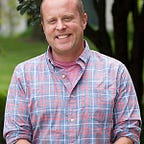A Halloween Like No Other
Halloween in the United States evolved mostly into a children’s holiday following the Second World War. Yet, with origins extending back thousands of years, All Hallow’s Eve was originally a time to celebrate the harvest, mark the change of seasons, and honor dead ancestors. While many Mexican-Americans have kept ancient traditions alive on the Day of the Dead, the rest of America has not.
But this wasn’t always the case, certainly not in Muncie. Halloween was widely and deeply celebrated by Munsonians of all ages throughout the late Victorian era and well into the 20th century.
An exemplar from this period was the Halloween of 1895. The day began when a 6.7 magnitude earthquake jolted the city awake at 5:15 AM. Frederick Putnam wrote in his journal that the earthquake was “prominent at almost all quarters from New Orleans to North Michigan and from Missouri to Eastern Ohio.” This seismic activity was the largest to have transpired in the area since the mammoth New Madrid earthquakes in 1811/1812.
The Muncie Evening Press reported that “Great buildings were rocked and swayed until the occupants were badly frightened and feared that they would be shaken down.” Muncie mostly escaped damage, with only Clark Gibson losing some plaster in his house and, what was surely an omen, the steeple shifted out of place at the Church of God.
Anderson residents felt the quake too, but, according to the Press, “Our Anderson friends try to make believe the shock was more perfectly felt in that town than anywhere else. But the people generally know the reputation of Anderson for exaggeration.”
Crime and mischief also seemed to percolate throughout the city that day. For instance, Charles Martin, a streetcar motorman, was burglarized for a sixth time in three years. Poor Martin was robbed of a gold watch and cash at his Westside home. The “thief seems to have been very familiar with the house, as he found fifteen dollars on the floor under a trunk.” Martin informed the Press that he intended to purchase “a good watch dog and a six shooter.” This surely caused Muncie’s criminal underbelly to shake in their boots, tremors they hadn’t felt since early morning.
By evening, residents turned out en masse for Halloween. The Press described that the “observances of Hallowe’en probably eclipsed all previous ones.” Munsonians began congregating for an informal parade and street party around 6:00 PM. The revelers, in a variety of costumes, stretched from Main Street to the Big Four Railroad (CSX) tracks and from Madison to Walnut. The Press noted that “watching them were not less than five thousand people, who did not always keep on the sidewalks.” If accurate, this means that approximately a third of Muncie’s population was celebrating downtown.
With more flowery prose, the Muncie Morning Star wrote that “the full autumn moon looked down from the semi-cloudless sky upon many strange scenes in Magic Muncie…the appearance upon the street early in the evening of a large number of people en masque and wearing grotesque costumes, together with the blowing of horns and the operation of various noise producing, nerve destroying apparatuses, marked the presence of the annual festival of foolishness and mischief making.” It was Muncie Gras on wheels.
For those not wishing to mix with the plebeians, posh Halloween parties were thrown for the well-to-do. For instance, after gathering at Laura Payton’s home on North Walnut Street, a dozen or so socialites “were driven in wagonnettes to the farm of Samuel Sunderland, southeast of the city, where a general good time was had.”
For those not Halloweening at country estates, a masquerade ball was held at Franklin Hall. 100 couples danced the night away “in full masque, some of the costumes being very beautiful and prepared at much expense.”
Another lavish party was held at Miss Grace Johnson’s home on East Washington Street. In keeping with Victorian norms, “gentlemen friends of the young ladies were invited in the earlier part of the evening…fortune tellers were present and enlightened the boys on their future.” Guests nibbled on cake, something called sawdust sausage, and wienerwurst. Get your mind out of the gutter, the men had all left by 11.
The most interesting party occured at the Bannister house on East Main. About fifty attendees arrived “unmasked and then each donned a sheet and a pillow slip…they formed the mystic circle and then each approached bowls filled with different fluids and had their fate pronounced.”
Victorian Muncie understood that Halloween was an opportunity to celebrate, what Lesley Pratt Bannatyne has called, “a holiday of magic and mystery, and one, though a peculiar blending of culture and custom, that is uniquely American.”
